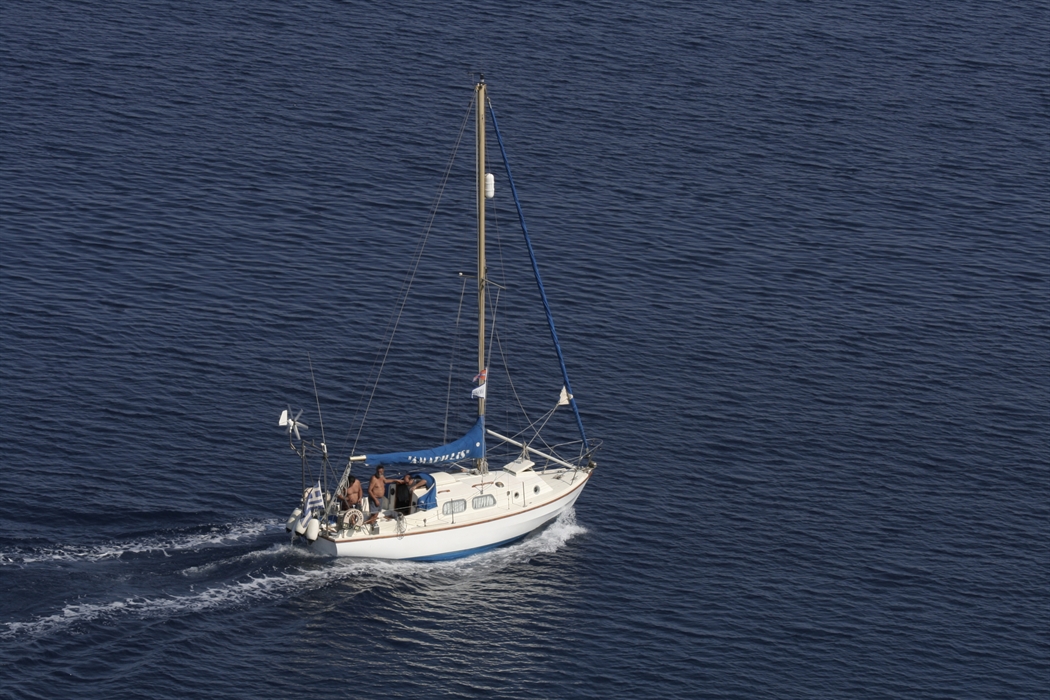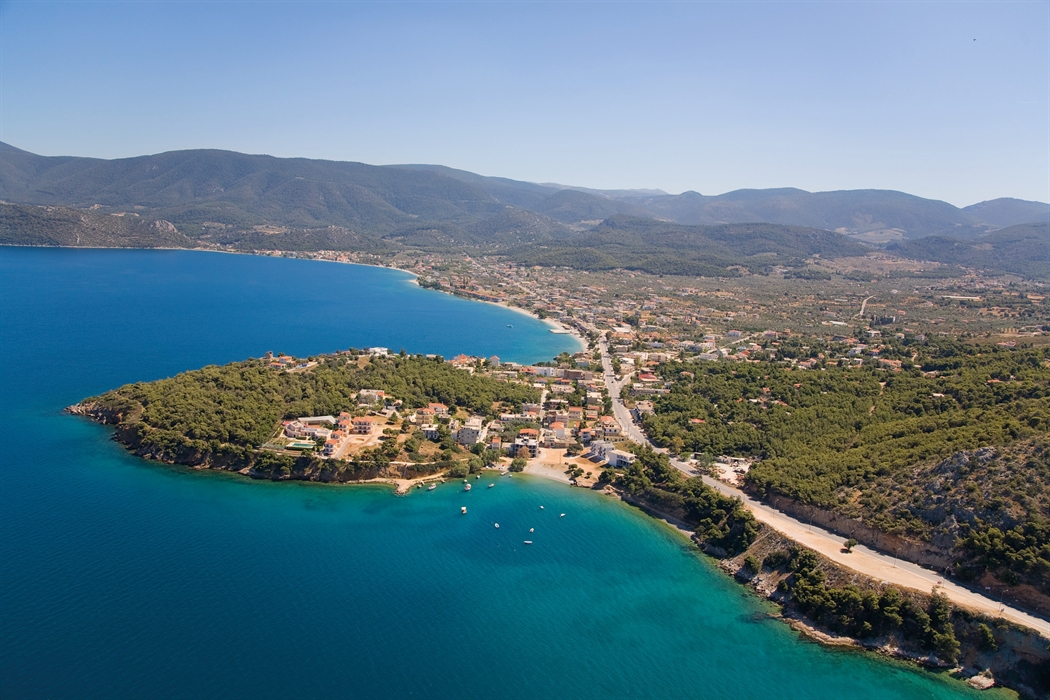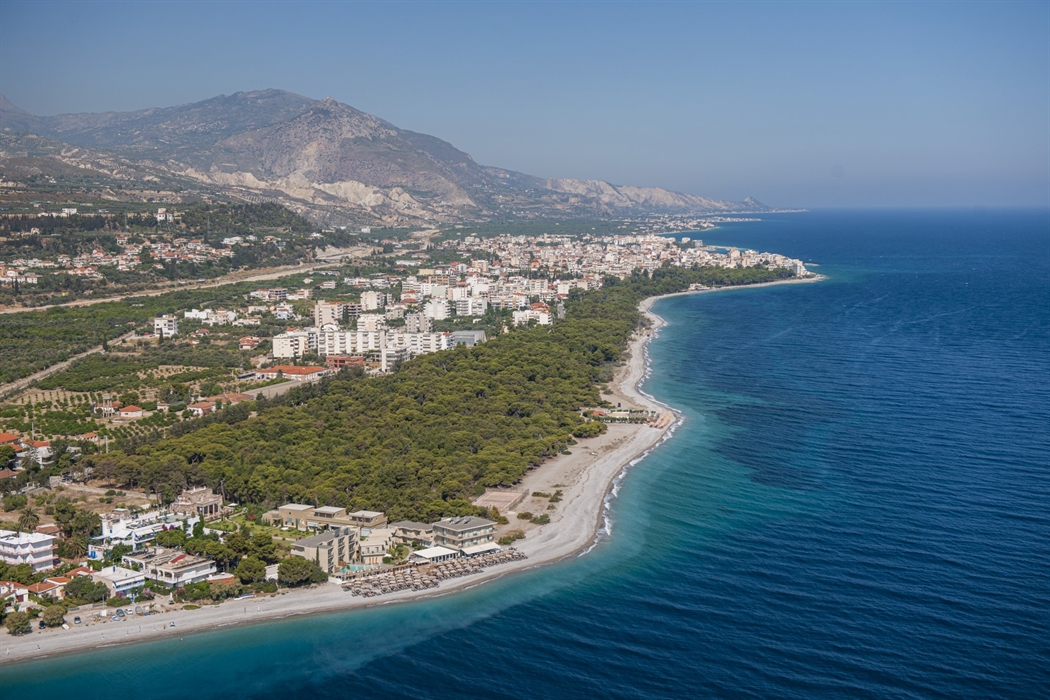Coastal settlements on the western Corinthian coastline
Lechaio, Vrachati, Neranza, Kiato, Diminio, Melissi, Xylokastro, Derveni. A colourful "rosary" of beaches and summer resorts stretches out to the west of Corinth, on the northern coastline of the Gulf.
Lechaio, Vrachati, Neranza, Kiato, Diminio, Melissi, Xylokastro, Derveni... A colourful "rosary" of beaches and summer resorts stretches out to the west of Corinth, on the northern coastline of the Gulf of Corinth.
The villages were developed as holiday resorts in earlier decades and now have a very good hospitality infrastructure with beach bars, tourist beaches, restaurants, cafes, shops and camping sites.
When you leave Corinth, one of the first areas you pass through will be Korakou, one of the oldest inhabited areas in Corinth with settlements going back to 5,000 BC. Traces of the port of Lechaio, which was an important port for ancient Corinth, can be seen there.
Next you will reach Vrachati with its beautiful, tourist beach. Take some time out to visit the chapel of Agia Triada which is in a plane tree forest, and the forest with the artificial waterfalls near Soulinari.
The second largest urban centre in the prefecture of Corinth is Kiato, which is 22 km from Corinth. Seat of the Municipality of Sikyonia, it is a holiday town that has become an important tourist destination and features very good infrastructures. Its port played an important role in the development of the region, as it was the place where citrus fruits were exported to the Eastern countries. The huge beach of Kiato has beach bars, restaurants, ouzerias, cafes and is organized with umbrellas and sunbeds. Around Kiato there are interesting attractions such as Ancient Sicyon and the Archaeological Museum, the beautiful forest of Mongostos, the Observatory and Panagia Lechova monastery. The date in which it was built can be deduced from the dating of the exceptional marble mosaic on the floor of the Katholikon. The creation of the mosaic, with its unique historical, religious and artistic value, dates back to the 11th or 12th century. The church was restored at the end of the Venetian rule (1715) and at the beginning of the Second Ottoman rule in the Peloponnese. The most important relic is the icon of the Virgin Mary, which dates from the end of the 17th or beginning of the 18th century.
35 km from Corinth you will find Xylokastro, which has been a holiday village since the 1920s. The village got its name from the castle which once stood here, on an area which had been in use since the Neolithic era. The long beach with its crystal-clear waters, beach bars, restaurants and cafes, has a long pedestrian and bicycle path along it, where you can join the locals for a stroll in the evenings. On the eastern edge of the village the coastal forest of Pefkias is an ideal spot for walks and exercise. The beautiful beach at Pefkias, which is organised at some points, was awarded a Blue Flag in 2022. The aristocratic villa which was built in 1916 and was home to Angelos Sikelianos and Eva Palmer is situated in the pine forest. It is notable for its architecture which combines ancient Greek, Byzantine and Venetian styles. In Xylokastro during the summer you can attend various events.
The remaining 25 km route to Derveni along the Corinthian coast is full of small seaside villages where you can find tavernas and beaches for swimming. Derveni is built right beside the water and has a picturesque harbour full of fishing boats and pleasure craft. The village has all the tourist infrastructure you might need on your vacation and the Derveni coast was awarded the Blue Flag in 2022.
Location
Find the destination on the interactive map below.
Σχετικό περιεχόμενο χρηστών (UGC)
Ενημερωθείτε για ενδιαφέροντα θέματα γύρω από τον προορισμό μέσα από το περιεχόμενο των χρηστών μας
Discover 7 hidden gems of the Peloponnese
Many of you may have already visited some of the most renowned attractions…
TOP 10 archaeological museums in the Peloponnese
Olympia, Mycenae, Epidaurus, Diros Cave, Ancient Corinth, Messene and…
TOP 10 Castles in the Peloponnese
Castles galore! Mystras, Monemvasia, Palamidi, Methoni, Koroni,…
Newsletters
- About us
- FAQ's
- Map
- Tourism information centers
- Disclaimer
- Sitemap
- Our brand
- Media roum
- Adding your bussiness
- Corporate
- MICE

Peloponnese. Greece beyond the obvious





Design and creation from Cosmote
Marinas and Moorings
Diving centers
Get inspired
- Media gallery
- Blog
- The Peloponnese in the media
- Your feedback
- Users' general content
- Users' local products
- Users' events content
- Ask a local
More
- Accommodation
- Travel agencies
- Restaurants
- Services
- Destinations Map
- Weather
- Public transport
- Events
- Frequently asked questions
- Useful phones
- B2B
- Destination Data
- Contact



